The Chit Chat on Chaps
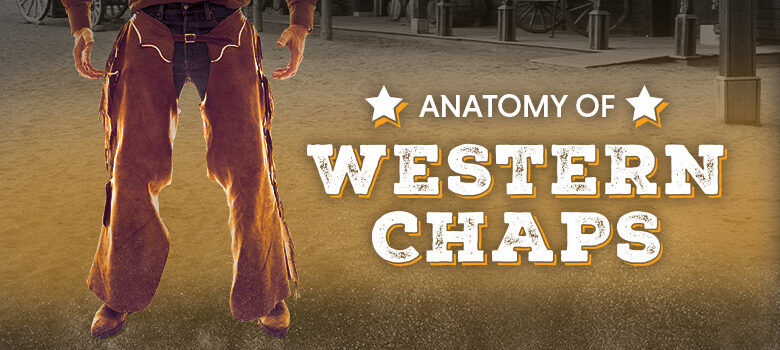
There’s one thing all cowboys in the Old West knew to be true—when it comes to saddlin’ up, it ain’t just about the saddle. From trudging through uncharted territory to showing off at the rodeo, cowboys have counted on chaps in more ways than one. Take a deep dive into the world of chaps and uncover why motorcyclists, equestrians, and many others still consider them a staple today.
WHAT ARE CHAPS?
In the simplest terms, chaps are leggings attached together by a belt, strap, or the construction of a yoke. Spaniards first introduced an early rendition of chaps (armas) in America during their conquest of Mexico. Armas attached to the horse and their bulky construction made it difficult to ride. From there, vaqueros (Mexican cowboys) evolved the design, first with armitas, which attached to the rider’s belt, and then to chaparajos (Or chaparreras), which featured an attached belt. Chaparajos inspired American cowboys to adopt the functional garment.
WHY WERE CHAPS WORN?
Serving multiple purposes, chaps’ main benefit was to protect the rider from the elements during their travels throughout the West. Made most often from animal hide, the material against the saddle helped the cowboy from slipping or sliding in the saddle, as compared to standard pants.
Chaps also functioned as a source of warmth when the temperature dropped, and kept riders dry when weather became unruly. Eventually, chaps evolved beyond functionality, and became a fashion statement, as well. As they grew in popularity, the designs became more elaborate, and were commonly adorned with fringe, embossed designs, pockets, and metal hardware.
TYPES OF WESTERN CHAPS
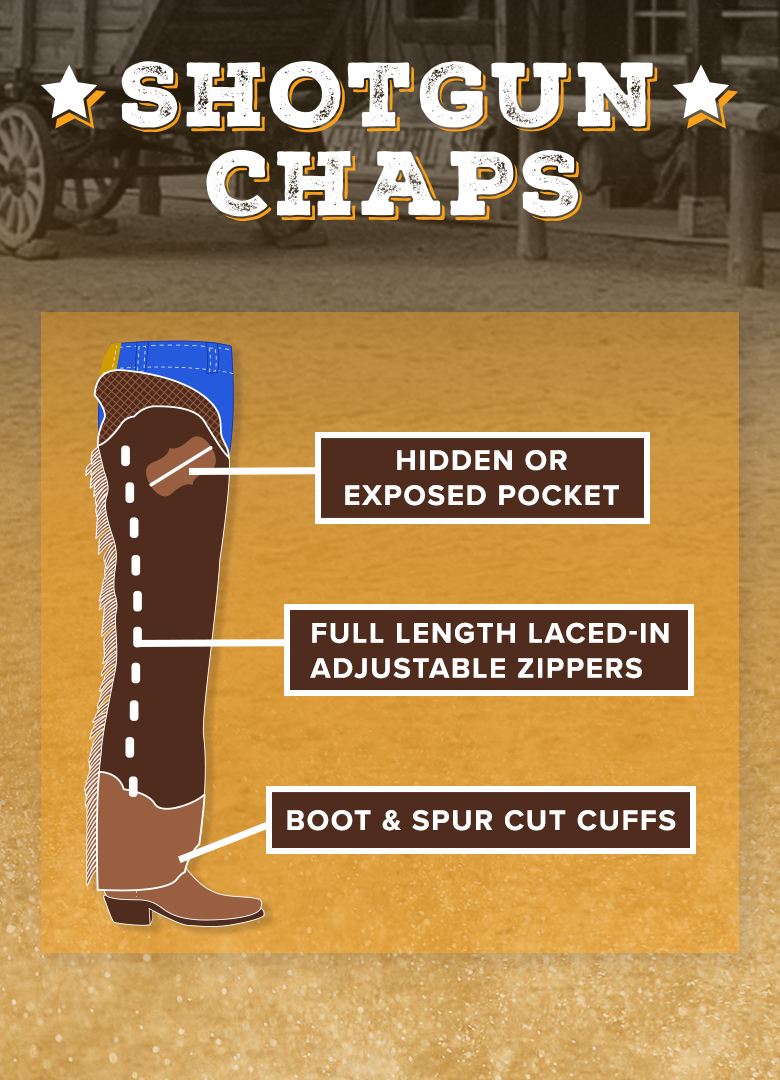
SHOTGUN CHAPS: Also known as Texas leg, shotgun chaps were the first style worn by American cowboys. Pulled on and off, shotgun chaps fit close to the legs and extend to the ankle. The fitted silhouette made the wearer resemble a shotgun, and they were difficult to get in and out of.
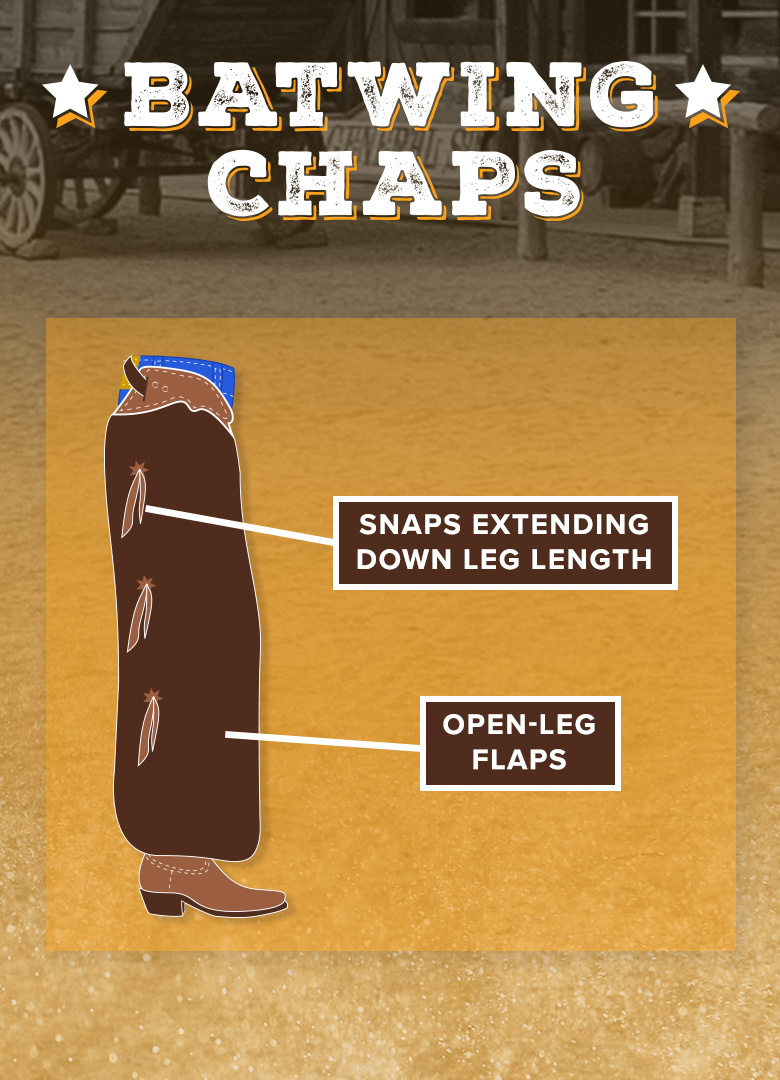
BATWING CHAPS: Wider in construction and far more functional than shotgun chaps, batwings had an open-leg construction that fastened with snaps extending down the length of the leg. Often, cowboys would leave some snaps unfastened, flapping around like the wings of a bat.
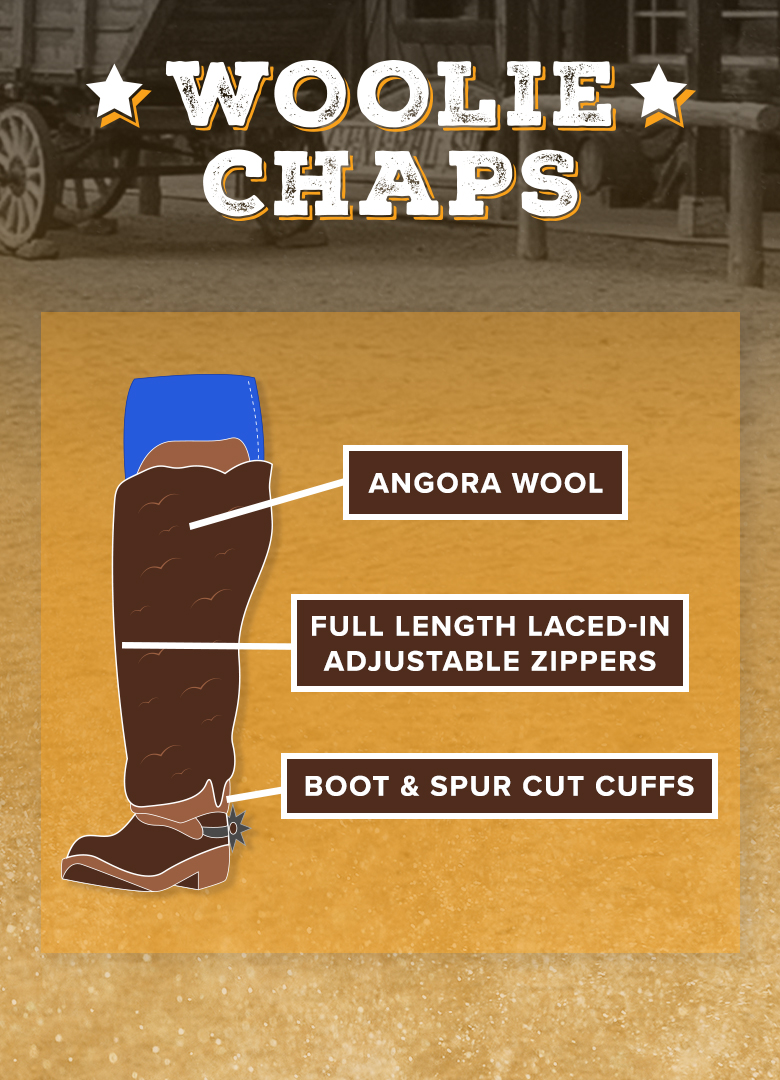
WOOLIES: Covered entirely by fur—commonly angora—woolies were quite the showstopper. Of the many variations, woolies featured a wider leg construction than shotgun chaps. These tended to be worn either by cold-weather cowboys for practicality, or by flashy performers.
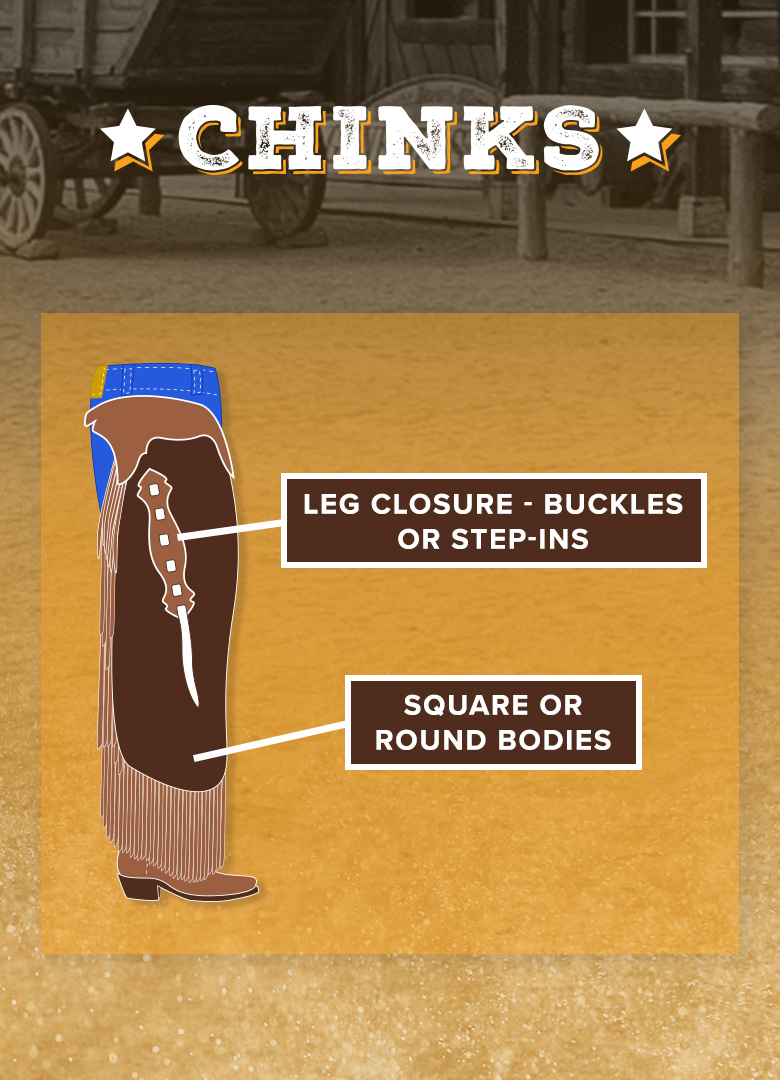
CHINKS: Influenced by the Spanish armitas, these are also known as buckaroos. Unlike other popular designs, chinks only extend to just below the knee. Fringe borders the outside edges, and the leg shape sits somewhere between shotgun and batwing chaps. Their lightweight construction made them ideal for warmer weather.



